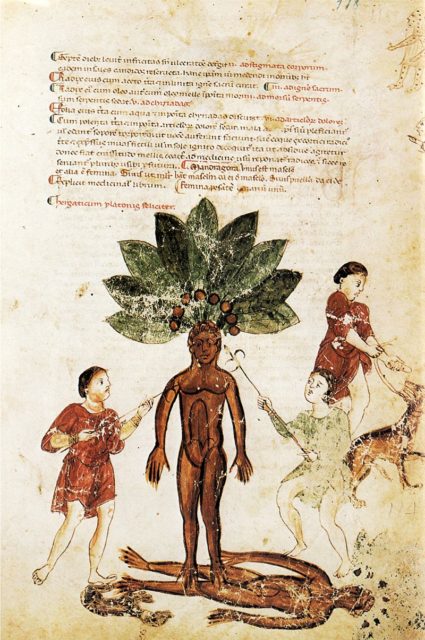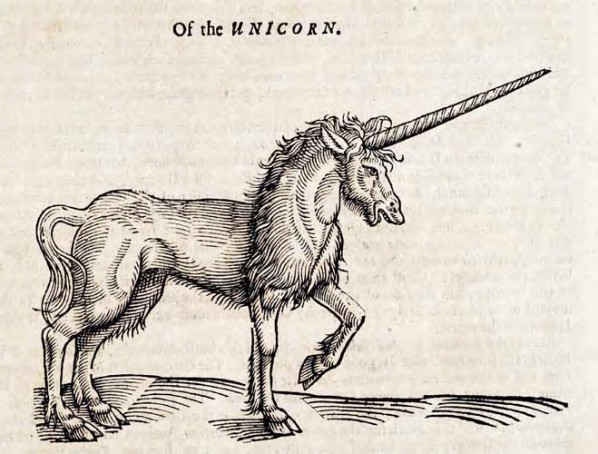Medieval medicine involved theories and practices that may appear strange to us today. However, some of these bizarre remedies are not actually as outlandish as they seem.
Medieval physicians thought the human body to be a microcosm of the world. This confidence was dominant in philosophical customs going back to ancient Greece and Rome. It was the basis of ancient medicine, and it was established from the works of Galen and Pythagoras, amongst others.
In Galenic philosophy, good health is subject to the appropriate equilibrium of warm, cold, moist and dry. These qualities were embodied in the four humors: blood, black bile, yellow bile and phlegm.
Medieval tonics were grounded in the theory that this completeness of presence infused everything, animals, plants, places, seasons, minerals, and words.
A condition was due to some astrophysical imbalance in the patient, and the therapy must right this imbalance. Remedies might involve making “simples” (mixtures of one element taken from Mother Nature), cupping, bloodletting, and other actions that appear odd to the contemporary mind.
10 Swallows’ Gizzards for Epilepsy

This procedure of the famed 14th-century English doctor of medicine John of Gaddesden was “simple,” as he stated:
The little red stones found in the gizzards of swallows, which are forever helpful if they are hung on the patient’s neck. After catching the swallows on the nest and cutting their gizzards, remove the stones in the middle of the day: they are useful, for they cure epileptic, insane, and lunatic patients.
The effectiveness of the elimination of the stones would partake being significant to the medieval physician for the reason that the Sun is hot, and the Moon is freezing. The stones are “warm,” as is the Sun and the effectiveness of this treatment would be connected to the detail that the epileptic’s confiscations were the outcome of too much fire or high temperature in the brain. As 12th century Benedictine Abbess, St. Hildegard von Bingen, wrote that “Like cures like.”
9 Detect Thieves And Prevent Defamation With Marigolds

The Book of Secrets of Albertus Magnus is an herbal therapy guide that comprises astrological inspirations. One such medicine, as recited in Harmony and Healing: The Theoretical Basis for Ancient and Medieval Medicine by James J. Garber, recommends a ceremonial using marigolds to protect in contradiction of robbery or being spoken down by others:
“If it be gathered, the sun being in the sign of Leo, in August, and be wrapped in the leaf of a Laurel, or Bay Tree and a wolf’s tooth be added thereto no man shall be able to have a word to speak against the bearer thereto, but words of peace. And if anything be stolen, if the bearer of things before named lays them under his head in the night, he shall see the thief and all his conditions.”
This treatment conglomerates the material goods of the marigold with the control of the Sun powerfully enough to give the being enchanted powers. Magic was frequently held to be factual in the Middle Ages, even though the Church strongly rejected its practice.
8 Mandrake Root For Depression

The mandrake root appears man-like. Its enchanted powers were thought to be enhanced due to its human shape.
For downheartedness, St. Hildegard von Bingen recommends excavating a mandrake root, which will (reportedly) scream when drawn from the ground. The mandrake should be instantly placed into a mechanism and immersed for a day and a night so that the evil inside it will be eliminated. Lay it next to your bedstead, and speak the following prayer:
“God, you made the human being from the mud of the earth without pain; now I place next to me this earth which has never been stepped on so that even my earth shall feel that peace, just as you created it.”
The outcome is that you will obtain happiness, and your core will sense salvation. This treatment is a worthy sample of using words and the healing influence of plants short of partaking to consume it or even put on it to your skin. It reveals the trust people placed in the supernatural during the Middle Ages.
7 Banish Anxiety With Bear’s Hair

Anxiety must have been common in the Middle Ages as many people suffer from it today as well. A remedy can be found in von Bingen’s Physica:
“Take some hair from between the bear’s ears, and place it on your chest over your heart until it warms up. Immediately you will be peaceful and calm.”
The power and tranquility of the bear are permeated into the anxious being, granting them self-assurance and peacefulness.
6 A Unicorn’s Hoof to Perceive Poison

If you think somebody is attempting to poison you, put a unicorn hoof beneath your platter or mug. If the plate is hot, the hoof will have it bubble. If what you have presented with is served cold, the hoof will make turn it into vapor.
This usefulness of a unicorn’s hoof to sense poisons in food is the outcome of the cleanliness of the unicorn, which by the Middle Ages, had come to embody Christ and wholesomeness.
5 For Testicle Conditions
If you’re facing difficulties with your testicles, St. Hildegard von Bingen’s Physica has you covered:
“He should burn a swallow’s egg in its shell, and then grind it to a powder. Add some chicken fat, and mix. Anoint the testicles with the mixture.”
This tonic informs the restorative powers in the egg. The boiled egg has a flawless balance of the humors, therefore its healing authorities.
4 Attire a Live Bat for Jaundice
For jaundice, the Physician states you should daze a bat by hitting it over the head. Then, link it over your thighs. Make certain the bat’s back is on the underside of your leg. Wait a while, and at that time tie its wings around your leg. Leave it there while waiting for it to die. Additional therapy for jaundice is to tie a lifeless widderwalo, a type of bird, over your abdomen.
In Galenic remedy, yellow bile was related with jaundice. The bat and bird being related to a treatment for jaundice possibly indicate that these creatures were thought to balance out the humors somehow.
3 Lion’s Ear Hearing Aid

According to the Physica, a lion’s ear can treat hearing damage:
“Hold the ear of a lion on the deaf ear until that ear warms up from the ear of the lion. Also say, Hear adimacus, by the living God, and by the sharpness of the lion’s strong hearing.”
This therapy uses verses and the impression of “like curing like,” common threads in the ancient remedy.
2 Contraception

In the 11th or 12th century, Trotula of Salerno inscribed a book on women’s medicine known as De passionibus mulierum which translates to On the Diseases of Women. Just about not anything is identified about who this lady was or anything containing her life. The Trotula, as the book came to be known, was in extensive use in Europe in the 12th throughout the 15th eras.
To avoid pregnancy, the Trotula recommended women to convey the womb of a goat that has on no occasion given birth touching their bare skin. This tonic is as well in the English therapy volume Bodley 591.
1 Medieval Viagra
The countless tonics for impotence, contraception, and conception in medieval medicine books prove that the people of the Middle Ages were as engrossed by sex as much as we are today. Indeed, it seems like they had their own equivalent to Viagra:
A gentleman “who has lost his kynde and is cold in the body or porpis” must create a brew of persill (parsley), lyngnum aloes (agarwood), seeds of fennel, canell (cinnamon from cassia bark), galingale, cardamom, and other ingredients as well. Pound these all together in a plaster and then place them into a mixing bowl, put in sugar, and dissolve it together. Take a little of what is left after the combination has melted, place it in a cup, and drink it.
